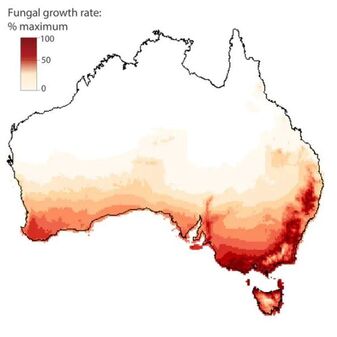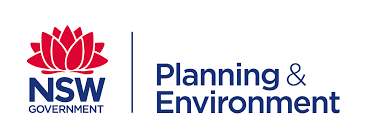White nose syndrome vs. Australian bats
|
White-nose syndrome (WNS) is a devastating wildlife disease that has killed millions of insectivorous bats in North America since 2006, when the causal fungal pathogen Pseudogymnoascus destructans (Pd) was first detected. Australian bats might soon face exposure to this potentially catastrophic fungal disease. Limited initial screening indicates the fungus is not currently in Australia. However, a Commonwealth-initiated expert risk assessment has concluded it is ‘almost certain’ that Pd will be inadvertently introduced into an Australian cave within the next ten years.
"it is very likely to almost certain that P. destructans will enter Australia, and it is likely that bats will be exposed to the fungus over the next 10 years" ~ Holz et al. (2016) In agreement with this worrying assessment, Australia’s Chief Environmental Biosecurity Officer has placed WNS in the top-five ‘priority native animal diseases and their pathogens’ of the interim priority list of exotic environmental pests and diseases. Similarly, the Animal Health Committee has recently added WNS to Australia’s national list of notifiable animal diseases. Yet, assessment of the probable impact of WNS is difficult because we know so little about the winter biology of Australia’s bats. Research has been identified as urgently needed to understand, prepare for, and respond to the imminent threat posed by WNS to Australia’s bat fauna. More information on white-nose-syndrome provided in the 'Resources' page. |
Aims & Expected Outcomes
This ARC Linkage-funded project aims to develop predictive models of vulnerability to WNS for populations of Australian bats by gaining critical information about their risk of exposure to the Pd pathogen and likely sensitivity to mortality from developing WNS.
Expected outcomes include spatially explicit, species-specific models of vulnerability to white-nose syndrome for bat populations across south-eastern Australia, essential for directing actions to prevent, detect and mitigate the impacts of this potentially catastrophic wildlife disease.
More detail on specific aims and methodology provided below:
Expected outcomes include spatially explicit, species-specific models of vulnerability to white-nose syndrome for bat populations across south-eastern Australia, essential for directing actions to prevent, detect and mitigate the impacts of this potentially catastrophic wildlife disease.
More detail on specific aims and methodology provided below:
Research Team
- A/Prof Christopher Turbill (Western Sydney University)
- Prof Justin Welbergen (Western Sydney University)
- Dr John Martin (Taronga Conservation Society Australia)
- Dr Lindy Lumsden (Department of Environment Land Water and Planning)
- Prof Fritz Geiser (University of New England)
- Dr Jasmin Hufschmid (The University of Melbourne)
- Prof Craig Willis (University of Winnipeg)
- Dr Nicholas Wu (Western Sydney University)
- Mr Tomás Villada-Cadavid (Western Sydney University)
Partner organisations
Suspect a bat with WNS?
Report any suspected cases to the Emergency Animal Disease Watch Hotline on 1800 675 888
Key signs to look out for are:
Key signs to look out for are:
- visible white fungus (particularly on the bat's nose)
- mass mortalities of cave-dwelling bats
- abnormal behaviour, such as bats flying outside during the day.
Project output
Scientific publications
- Turbill, C. & Welbergen, J. A. (2019) Anticipating white‐nose syndrome in the Southern Hemisphere: Widespread conditions favourable to Pseudogymnoascus destructans pose a serious risk to Australia's bat fauna. Austral Ecology, 45(1), 89-96 [PDF]
- Holz, P., Hufschmid, J., Boardman, W.S.J, Cassey, P., Firestone, S., Lumsden, L.F, Prowse, T.A.A., Reardon, T. & Stevenson, M. (2019) Does the fungus causing white-nose syndrome pose a significant risk to Australian bats? Wildlife Research, 46(8):657-668 [PDF]
Articles
- Turbill, C. & Welbergen, J. A. (2020) Australia’s threatened bats need protection from a silent killer: white-nose syndrome. The Conversation, 20-1-2020
Presentations
- Wu N. C., Geiser F., Hufschmid J., Lumsden L., Martin J. M., Welbergen J. A., Willis C. K. R., & Turbill C. (2022) Vulnerability of Australian bats to white-nose syndrome — a catastrophic fungal disease. Australasian Bat Society Conference. Brisbane, Australia. [link]
- Ingeme Y., & Cox-Witton K. (2022) Keeping white-nose syndrome out of Australia. Australasian Bat Society Conference. Brisbane, Australia. [link]










